
After quitting his job in as a chef at a Japanese restaurant due to his Muslim faith which forbids him to cook with alcohol, Muhammad Niszam B. Mohamed exchanged the art of cooking for the art of Batik painting and has not looked back since.
Initially, he simply worked for his uncle, Lazim, another batik artist at the Craft Complex. Lazim taught also taught batik painting classes in his studio and after sitting in on a few of these classes, Niszam decided to try the art for himself. It was in the year 2002 that he began to paint seriously.
Amazingly, Niszam is a self taught artist who has never had any formal art training. His beautiful batik paintings are the result of his own motivation and much trial and error. Through the use of books and internet sites, he even managed to teach himself airbrush, and hopes to further his studies in acrylic and oil on canvass as a way to enhance his batiks.
Batik painting is not easy and Niszam estimates that it took him six months to control the tjanting tool and 2 years to learn truly learn the techniques of this medium. This is a sign of his hard work and dedication since it normally takes students three years to get a degree in batik from the National Craft Institute.
 In order to survive, Niszam must find the right way to sell his art and make a living. Selling over 100 pieces a year at an average price of RM100, Niszam is already quite successful. Although he currently only markets in Malaysia he hopes to expand abroad in the future. Furthermore, many tourists bring his work home with them, spreading it all over the world. Niszam’s main concern is not money however and is focused instead on producing good quality products to make the customer happy and satisfied. As he asserts, “if you work hard, the money will come.”
In order to survive, Niszam must find the right way to sell his art and make a living. Selling over 100 pieces a year at an average price of RM100, Niszam is already quite successful. Although he currently only markets in Malaysia he hopes to expand abroad in the future. Furthermore, many tourists bring his work home with them, spreading it all over the world. Niszam’s main concern is not money however and is focused instead on producing good quality products to make the customer happy and satisfied. As he asserts, “if you work hard, the money will come.”It is without a doubt that Niszam does work hard. From 8 am to 6pm, seven days a week, he works in his rented gallery space at the Crafts Complex. When asked however, he asserts that he is never tired because to him, “batik is fun.”
Although many people would consider batik to be a craft, Niszam is adamant that his work is art. The difference he says is that crafts such as bags, ties, dresses scarves are functional while batik art such as wall hangings are to be displayed. Art is one-of-a-kind he says and takes a lot more time and patience to create.

It is important to Niszam that he carry on Malaysian batik traditions and yet also be innovative in his work. To expand his horizons, he studies other batik artists from around the world and sees their work as very different from most Malaysian batiks. Their subjects of figures, animals and architecture, inspire him. Furthermore, he is amazed by the different techniques that are possible. The use of the colored gutta instead of wax is one aspect abroad that does not impress him however because the tjanting tool is much more difficult and dangerous to work with. Such a painting he asserts, is no longer a “real batik.”
As well as drawing inspiration from past artists, Niszam often goes on walks, looks in books and surfs the internet to come up with new designs and techniques. He is also inspired by his gallery-mate—a woman who paints mainly with acrylic but also makes batiks on watercolor paper. There is so much competition from the many batik artists in Malaysia that he must find a way to differentiate himself. “No one else can make my batiks” he asserts. What makes him special is the time and patience he puts into every work. “Other artists make simple batiks quickly to sell and make money” he says, “my work often takes me weeks and even months to finish!”
Niszam’s work is not static and has changed though the years. He likes to experiment and is still learning about different techniques and methods to create a batik. His original paintings focused on traditional flora and fauna. Now likes to paint animals and landscapes. Although he is Muslim, he is allowed to draw animals as long as it is not to be used for prayer.
 In the artist Muhammad Niszam B. Mohamed, we find a unique Malaysian artist who is not afraid to step out of the box. While most batiks are created for fashion, here is a true artist whose works of fine art are not made to be cut up into clothing. He asserts that although he is just a newcomer and there is a lot more for him to learn, “someday, I hope to be a legendary batik artist.
In the artist Muhammad Niszam B. Mohamed, we find a unique Malaysian artist who is not afraid to step out of the box. While most batiks are created for fashion, here is a true artist whose works of fine art are not made to be cut up into clothing. He asserts that although he is just a newcomer and there is a lot more for him to learn, “someday, I hope to be a legendary batik artist.

As well as drawing inspiration from past artists, Niszam often goes on walks, looks in books and surfs the internet to come up with new designs and techniques. He is also inspired by his gallery-mate—a woman who paints mainly with acrylic but also makes batiks on watercolor paper. There is so much competition from the many batik artists in Malaysia that he must find a way to differentiate himself. “No one else can make my batiks” he asserts. What makes him special is the time and patience he puts into every work. “Other artists make simple batiks quickly to sell and make money” he says, “my work often takes me weeks and even months to finish!”
Niszam’s work is not static and has changed though the years. He likes to experiment and is still learning about different techniques and methods to create a batik. His original paintings focused on traditional flora and fauna. Now likes to paint animals and landscapes. Although he is Muslim, he is allowed to draw animals as long as it is not to be used for prayer.
 In the artist Muhammad Niszam B. Mohamed, we find a unique Malaysian artist who is not afraid to step out of the box. While most batiks are created for fashion, here is a true artist whose works of fine art are not made to be cut up into clothing. He asserts that although he is just a newcomer and there is a lot more for him to learn, “someday, I hope to be a legendary batik artist.
In the artist Muhammad Niszam B. Mohamed, we find a unique Malaysian artist who is not afraid to step out of the box. While most batiks are created for fashion, here is a true artist whose works of fine art are not made to be cut up into clothing. He asserts that although he is just a newcomer and there is a lot more for him to learn, “someday, I hope to be a legendary batik artist.
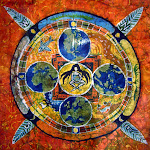
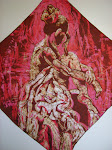

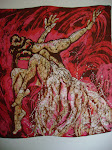

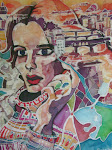
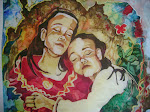

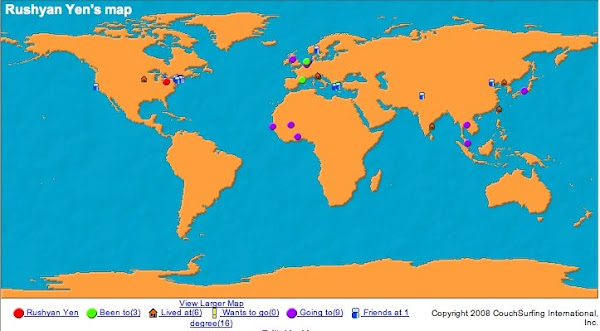
No comments:
Post a Comment